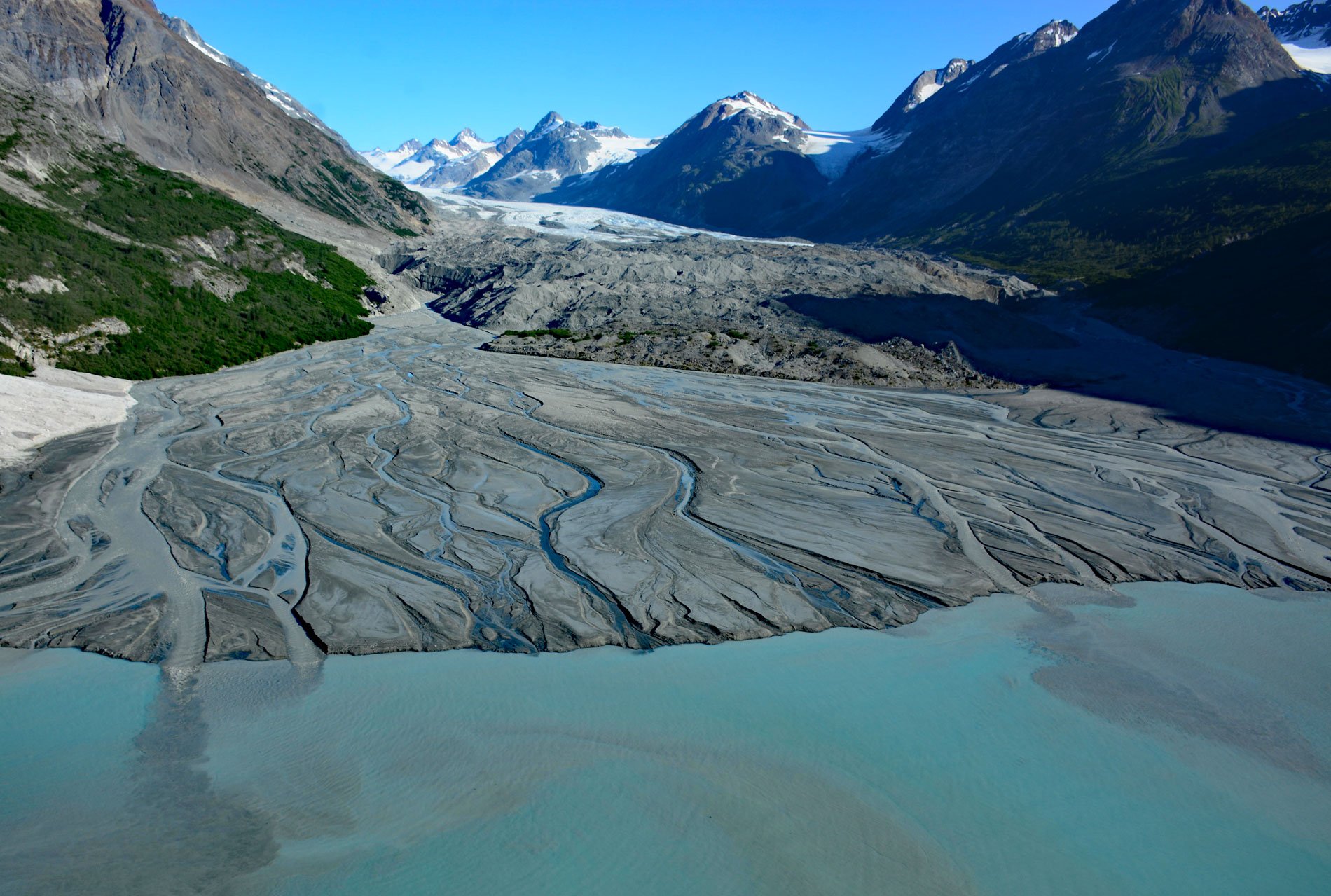Rendu Glacier starts in the Fairweather Range at an elevation of roughly 4600 feet (1400 m) in British Columbia and flows generally southeast for about 1 mile (1.6 km) to the United States border between Mount Barnard to the southwest and Boundary Peak 159 to the northeast, and then continues for another 12 miles through Glacier Bay National Park and Preserve to Rendu Inlet, about 113 miles (182 km) southeast of Yakutat and 54 miles (87 km) north-northwest of Gustavus, Alaska. The glacier was named in 1896 by Harry F. Reid for Louis Rendu, the French Roman Catholic Bishop of Annecy and a glaciologist who in 1843 authored Theorie des glaciers de la Savoie, an important book on the mechanisms of glacial motion. Rendu Glacier is roughly aligned along the eastern edge of the Border Ranges Fault and associated shear zone. The fault system marks the boundary between the Alexander terrane and the Chugach terrane, and in Glacier Bay National Park separates crystalline rocks of the Alexander terrane, a Paleozoic to middle Mesozoic arc basement, from metamorphic rocks of the Chugach terrane, a Mesozoic subduction accretionary complex that together comprise an oceanic arc system accreted to North America during the Mesozoic.
During the voyage of discovery by Captain George Vancouver in 1794, the expedition found a wall of ice representing the terminus of what later was named Muir Glacier, which at that time filled Glacier Bay but was probably already retreating. In about 1860, Muir Glacier had retreated to the head of Glacier Bay and had separated from Grand Pacific Glacier. Between 1886 and 1968, Muir Inlet was exposed and the average rate of retreat of Muir Glacier was 1300 feet (400 m) per year exposing Adams Inlet in 1905, Wachusett Inlet in 1927, McBride Inlet in 1946, and Riggs Inlet in 1966. By the mid-1990s, Muir Glacier retreated above tidewater. Between 1974 and 1982, there were 12 tidewater glaciers actively calving icebergs into Glacier Bay including McBride, Riggs, Muir, Grand Pacific, Margerie, Toyatte, Johns Hopkins, Gilman, Hoonah, Kashoto, Lamplugh, and Reid glaciers. Of these, today only Johns Hopkins, Grand Pacific, Margerie, Gilman, McBride, and Lamplugh reach tidewater, although the latter is now grounded.
Rendu Glacier has a rugged, debris-covered terminus that is thinning very slowly. The debris cover developed following a surge that occurred about 20 years ago. The glacier is one of several surging glaciers in Alaska that exhibit a sudden onset of extremely high flow rates of 100’s feet (10’s m) per day followed by a sudden deceleration. The surges are often associated with discharge of stored water that may suggest they are hydrologically controlled. Glacier surges are generally short-lived, with periods of rapid movement usually lasting 3 to 5 years, interspersed by longer quiescent phases lasting for decades. During this period, the velocities of surging glaciers are significantly lower, and the glaciers can retreat substantially. Only about 1% of the world’s glaciers have been observed to have surging behavior, and the surging periodicity differs considerably among other regions of the world. For example, glaciers in Svalbard tend to have surge periods lasting 3 to 10 years or even decades, and the static periods lasting between 50 and 500 years, while in Alaska and Yukon surge periods last for 1 to 3 years and the quiescent period is 20 to 40 years. Read more here and here. Explore more of Rendu Glacier and Glacier Bay National Park and Preserve here:

